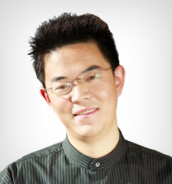Questions 31 to 35 are based on the following passage:
The importance and focus of the interview in the work of the print and broadcast journalist is reflected in several books that have been written on the topic. Most of these books, as well as several chapters, mainly in, but not limited to, journalism and broadcasting handbooks and reporting texts, stress the “how to”aspects of journalistic interviewing rather than the conceptual aspects of the interview, its context, and implications. Much of the “how to” material is based on personal experiences and general impressions. As we know, in journalism as in other fields, much can be learned from the systematic study of professional practice. Such study brings together evidence from which broad generalized principles can be developed.
There is, as has been suggested, a growing body of research literature in journalism and broadcasting, but very little significant attention has been devoted to the study of the interview itself. On the other hand, many general texts as well as numerous research articles on interviewing in fields other than journalism have been written. Many of these books and articles present the theoretical and empirical aspects of the interview as well as the training of the interviewers. Unhappily, this plentiful general literature about interviewing pays little attention to the journalistic interview. The fact that the general literature on interviewing does not deal with the journalistic interview seems to be surprising for two reasons. First, it seems likely that most people in modern Western societies are more familiar, at least in a positive manner, with journalistic interviewing than with any other form of interviewing. Most of us are probably somewhat familiar with the clinical interview, such as that conducted by physicians and psychologists. In these situations the professional person or interviewer is interested in getting information necessary for the diagnosis (診斷) and treatment of the person seeking help. Another familiar situation is the job interview. However, very few of us have actually been interviewed personally by the mass media, particularly by television. And yet, we have a vivid acquaintance with the journalistic interview by virtue of our roles as readers, listeners, and viewers. Even so, true understanding of the journalistic interview, especially television interviews, requires thoughtful analyses and even study, as this book indicates.
31. The main idea of the first paragraph is that .
A) generalized principles for journalistic interviews are the chief concern for writers on journalism
B) importance should be attached to the systematic study of journalistic interviewing
C) concepts and contextual implications are of secondary importance to journalistic interviewing
D) personal experiences and general impressions should be excluded from journalistic interviews
32. Much research has been done on interviews in general .
A) so the training of journalistic interviewers has likewise been strengthened
B) though the study of the interviewing techniques hasn't received much attention
C) but journalistic interviewing as a specific field has unfortunately been neglected
D) and there has also been a dramatic growth in the study of journalistic interviewing
33. Westerners are familiar with the journalistic interview, .
A) but most of them wish to stay away from it
B) and many of them hope to be interviewed some day
C) and many of them would like to acquire a true understanding of it
D) but most of them may not have been interviewed in person
34. Who is the interviewee in a clinical interview?
A) The patient. C) The journalist.
B) The physician. D) The psychologist.
35. The passage is most likely a part of .
A) a news article C) a research report
B) a journalistic interview D) a preface
Questions 36 to 40 are based on the following passage:
The relationship between the home and market economies has gone through two distinct stages. Early industrialization began the process of transferring some production processes (e.g. cloth making, sewing and canning foods) from the home to the marketplace. Although the home economy could still produce these goods, the processes were laborious (費力的) and the market economy was usually more efficient. Soon, the more important second stage was evident — the marketplace began producing goods and services that had never been produced by the home economy, and the home economy was unable to produce them (e.g. electricity and electrical appliances, the automobile, advanced education, sophisticated medical care). In the second stage, the question of whether the home economy was less efficient in producing these new goods and services was irrelevant; if the family were to enjoy these fruits of industrialization, they would have to be obtained in the marketplace. The traditional ways of taking care of these needs in the home, such as in nursing the sick, became socially unacceptable (and, in most serious cases, probably less successful). Just as the appearance of the automobile made the use of the horse-drawn carriage illegal and then impractical, and the appearance of television changed the radio from a source of entertainment to a source of background music, so most of the fruits of economic growth did not increase the options available to the home economy to either produce the goods or services or purchase them in the market. Growth brought with it increased variety in consumer goods, but not increased flexibility for the home economy in obtaining these goods and services. Instead, economic growth brought with it increased consumer reliance on the marketplace. In order to consume these new goods and services, the family had to enter the marketplace as wage earners and consumers. The neoclassical (新古典主義的) model that views the family as deciding whether to produce goods and services directly or to purchase them in the marketplace is basically a model of the first stage. It cannot accurately be applied to the second (and current) stage.














